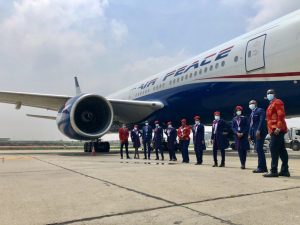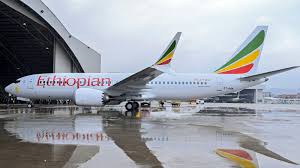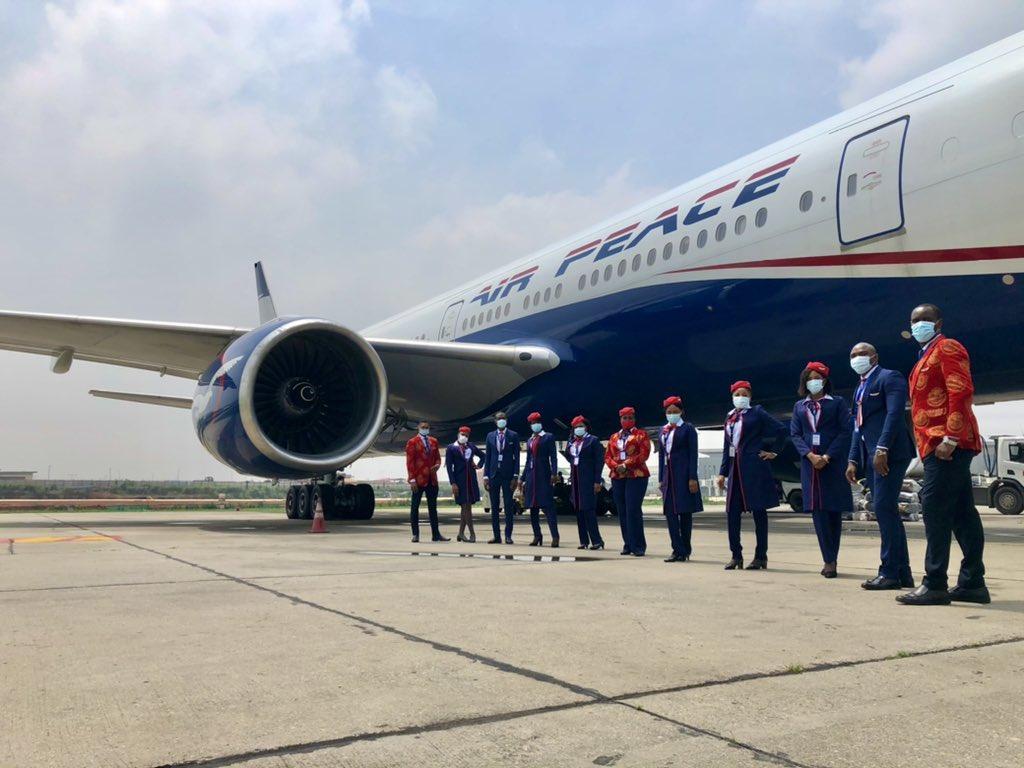
Despite the initial skepticism around the introduction of Single African Air Transport Market (SAATM), it has emerged that Nigerian airlines are now optimistic and are currently looking at ways to take advantage of the $4.2 billion market.
Nigeria is a supplier of home products to most of West and Central Africa countries, including manufactured products and agricultural produce.
Also, Nigerian airlines are the most active in these regions and at different times Nigerian carriers have operated West and Central African destinations.
Currently many Nigerian traders and other traders from different countries in these sub-regions come to Nigeria to buy goods but most of these traders move their goods by road and by sea.
Managing Director of Flight and Logistics Solutions Limited, Amos Akpan, who has operated cargo plane services to some of these destinations, projects that Nigerian airlines will be recording high load factor daily if they can make 60 per cent of traders who crisscross these countries to Nigeria by road and could change their mode of transport and travel by air.
Akpan said the major reason the traders that traverse West and Central Africa travel more by road was because of high cost of flight tickets, noting that although some of them can afford it, the unit cost of their goods may not justify air travel.
“So, Nigerian airlines can explore this market if they can bring down the fares. If more people travel by air the fares will come down. This is the objective of SAATM, which aims to bring down the cost of air travel in Africa, as passenger traffic grows,” Akpan said.
Industry experts posit that SAATM has the potential to significantly enhance Nigeria’s aviation sector, boost economic growth, and foster greater regional integration.
At the recent African Aviation conference in Abuja, the Secretary General of the African Civil Aviation Commission (AFCAC), Adefunke Adeyemi, said SAATM would establish a liberalised intra-African aviation market in relation to traffic rights, capacity, frequency, pricing, designation; creating a conducive environment, for the development and provision of safe, reliable and affordable air transport system in Africa.
She also said that SATM would eliminate non-physical barriers that hamper the sustainable development of air transport services in the continent.
SAATM, she added, would encourage cooperation among African airlines, including commercial and technical cooperation, adding that SAATM would improve the quality of service to the consumers, create one single air transport market in Africa, liberalize civil aviation on the continent and drive economic integration.
Adeyemi also said SAATM would increase 5th freedom, which is a right that allows an airline to carry passengers between two foreign countries as part of a service that originates or ends in its own country.
She also projected that there would be increase in 5th freedom traffic rights operations across Africa from 14.5 per cent to 30 per cent by 2025.
“In addition, there will be increase inter-sectoral collaboration and synergies between air transport institutions and other sectors of the economy. SSATM will make Yamoussoukro Decision, which is the liberalisation of Africa’s airspace a reality, where immigration barriers would be removed, “she said.
Adeyemi said there would be traffic rights and designation authorization and there will be subregional hubs such as: Gabon/Nigeria, ANAC Gabon/South Africa; Nigeria/Togo; Madagascar/South Africa; Nigeria/Cote d’ Ivoire; Nigeria Senegal/Angola/Egypt/Ghana/Niger/Sierra Leone/Sudan (Niger and Ghana resolved).
She projects that in some countries well-known airlines will dominate intra-connectivity services, which would include Transair-Senegal – Dakar-Abidjan-Bamako; Air Cote d’Ivoire – Abidjan- Abuja-Lome; Air Cote d’ Ivoire – Abidjan-Kinshasa-J’Burg; Asky Airlines – Lome-Ouagadougou-Lagos; Asky – Lome-Praia-Bissau and Afrijat – Libreville-Cotonou – Sao Tome.
Such sub-regional hubs will include Ciba – Libreville-Pointe Noire- Cotonou; Ethiopian Airlines – Addis Ababa-Conakry-Ouagadougou; Kenya Airways – Nairobi-Accra-Free Town; Kenya Airways – Nairobi-Accra-Dakar and Ethiopian Airlines – Addis Ababa – Ndola –Bulawayo.
There will also be Lam Mozambique – Maputo-Harare-Lusaka; Air Mauritania – Nouakchott-Bangui-Cotonou; Ethiopian Airlines – Addis Ababa-Conakry-Ouagadougou; Kenya Airways – Nairobi-Accra-Free Town; Kenya Airways – Nairobi-Accra-Dakar; ET – Addis Ababa – Ndola –Bulawayo; Air Peace – Lome-Lagos and Asky Airlines – Lome-Luanda.
Adeyemi compared what SAATM will do to Africa to what Europe has achieved decades ago with open sky and the same with some parts of Asia that are already enjoying the system.
“When Europe adopted the single sky system, known as the European Single Aviation Market (1970 – late 90s), the benefits include generation of an incremental 44 million passengers was recorded, with an increase in post-liberalization years of about 33 per cent as contrasted with pre-liberalization growth of about four per cent-six per cent per year.
There was the creation of 1.4 million full-time jobs resulted from the liberalization and the European GDP grew by $85 billion.
“ASEAN Single Aviation Market (2009-2011) provided the following benefits the growth in origin-destination (OD) passengers increased by 116% between 2005 and 2012, the total annual scheduled capacity CAGR growth increased from 8% to 13 per cent after the ASEAN signature; low cost carriers led much of that growth: between 2009 and 2012 full service carriers grew by 6.1 per cent annually while ASEAN’s low-cost carriers grew about 3.5 time faster (21.8 per cent) annually on average; ASEAN market share grew 40% in main city-pairs markets and 55% in secondary markets, “she argued.
Adeyemi said when fully embraced, SAATM will provide the following benefits: additional 588,750 jobs and $ 4.2 billion additional GDP (0.17 per cent); fare will reduce by 26% overall, results in a total fare saving of $ 1.46 billion per annum; consumer surplus increase by $ 2.85 billion and traffic will grow 15,9 million additional passengers (31 per cent increase) and 6.7 million passenger increase in 35 SAATM States (representing 37 per cent growth).

In terms of connectivity, it is expected that SAATM will enhance expected that +145 additional City Pairs will be created (direct flights) and shorter traveling time. It will create 96.440 jobs created in Aviation; 268.530 new jobs in tourism and additional four million tourists; and 1.1% increase in trade within the continent (GDP).
However, the Chairman and CEO of Air Peace, West Africa, biggest carrier, Allen Onyema, warned that the benefits of SAAM would remain elusive if there is no fairness and equal application of the rules from one country to another.





